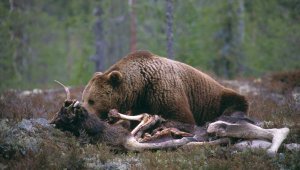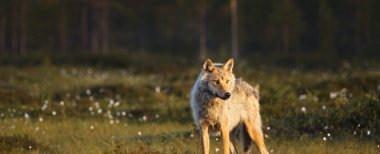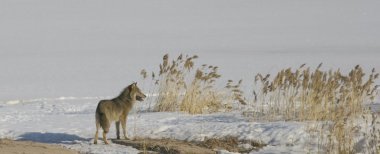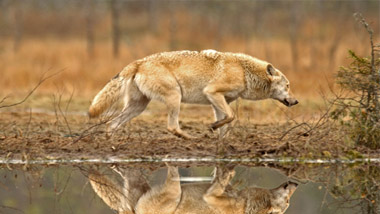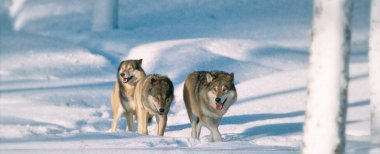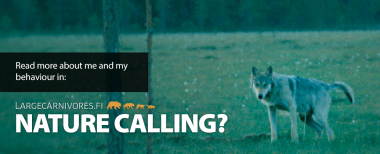Management plan for the Finnish wolf population
The Ministry of Agriculture and Forestry approved the new Management Plan for the Wolf Population in Finland on 5 November 2019. The updated management plan is based on the Management Plan for the Wolf Population in Finland adopted in 2015. It is the third management plan concerning the wolf population implemented in Finland.
Working group preparing the Management Plan for the Wolf Population discusses multi-species population management
Thu Feb 14 10:40:00 2019
Multi-species population management takes into account the relationships between species, such as populations of various large carnivores in relation to the populations of their prey, i.e. cervids. A multi-species approach is currently implemented in the regulation of the cervid population by factoring in the predation effects of large carnivores when planning the taxation of cervids. A multi-species approach to population management must consider regional differences in ecosystems and landscape structures. For example, the large carnivores and cervids found in Southwest Finland differ greatly from those found in Eastern Finland in terms of both species distribution and population size.
In the working group's view, a multi-species approach to population management is an important aspect of large carnivore and cervid population management that requires further development. The working group also discussed the fact that in addition to considering the interactions between different game species, multi-species population management must factor in the positive and negative effects of large carnivores and cervids on humans and human activities, for instance. Negative effects include the damage caused by large carnivores and cervids, while an example of a positive effect is the benefits of the species for the wilderness economy.
More research data needed
Multi-species population management involves taking into account several factors and their interdependencies. In the working group’s view, resources should be allocated for research on multi-species population management to support decision-making, for example when planning taxation of the moose population in moose economy areas. This would make it possible to develop population management in a way that takes better account of the special features of different regions.
Studies have found that wolves, for instance, have a wide range of effects on the ecosystem. The effects can be divided into direct effects of wolf predation (such as on the number of cervids) and indirect effects caused by the presence of wolves in an area. The latter category includes changes in the behaviour of other species and effects on the environment and nutrient network. By increasing awareness of the role of the wolf as a part of the ecosystem and biodiversity, we can also work to promote acceptance of the wolf.
The working group also discussed the effects of the wolf and other large carnivores on the protected forest reindeer population. Studies of the forest reindeer population in Kainuu have found that predation by large carnivores and the wolf in particular has a reducing effect on the population. This may be due in part to the fact that as a species, the Finnish forest reindeer differs from the moose and white-tailed deer in terms of its living habits and breeding patterns, for example.
The working group was of the view that when dealing with questions concerning the Finnish forest reindeer, it is important to look for solutions and set targets that help to secure the vitality of both the wolf and forest reindeer populations. More information on the Finnish forest reindeer population is available on the Natural Resources Institute Finland website.
Read more: The Swedish Environmental Protection Agency recently released a report (in Swedish) examining the effects of large carnivores on other game species.
Sightings as the basis of population estimates
Natural Resources Institute Finland's (Luke) estimates on the numbers of animals are primarily based on sighting data collected by a volunteer organisation consisting of the contact persons of regional game management associations. Other utilised methods include on-the-ground censuses made by hunter...
EU and the conservation of large carnivores
As a member of the European Union, Finland commits to taking EU legislation into account in its decision making. The Directives of the European Community are incorporated into national legislation, which extends their reach to also cover all private operators. The status of large carnivores is regul...
